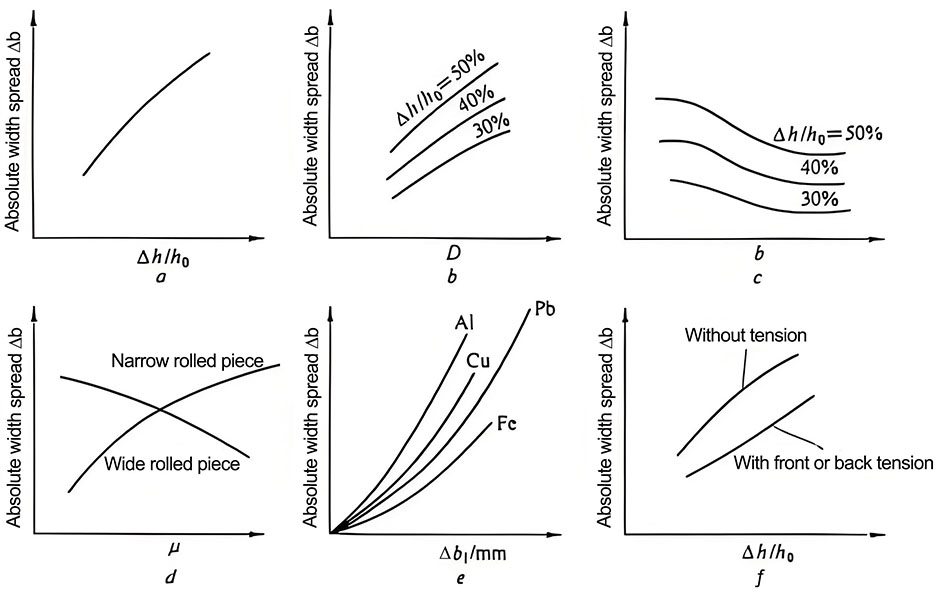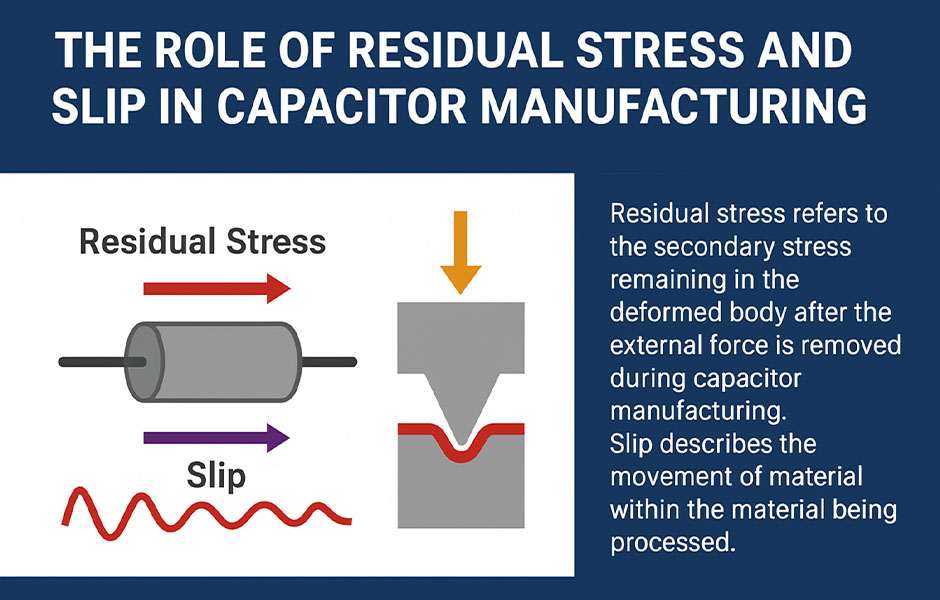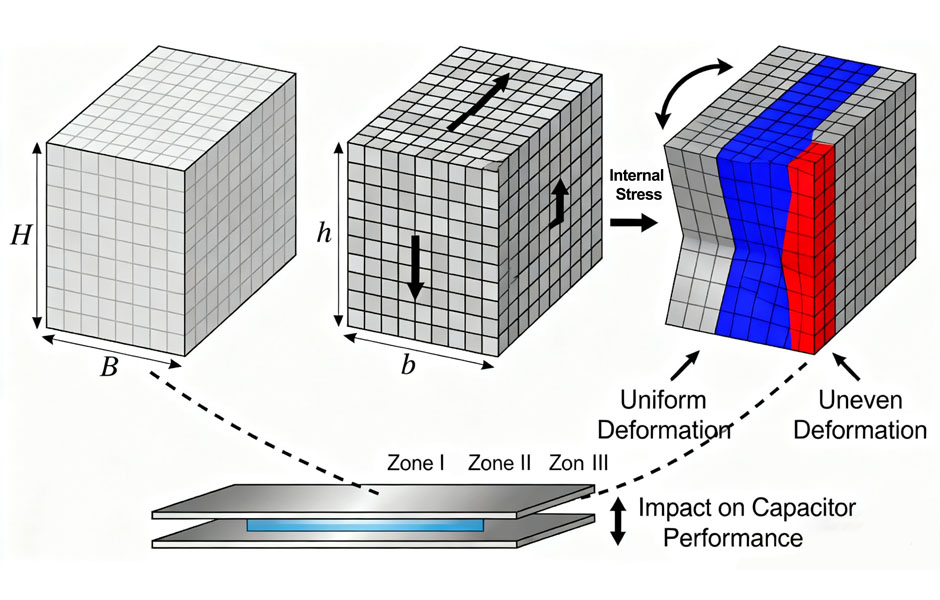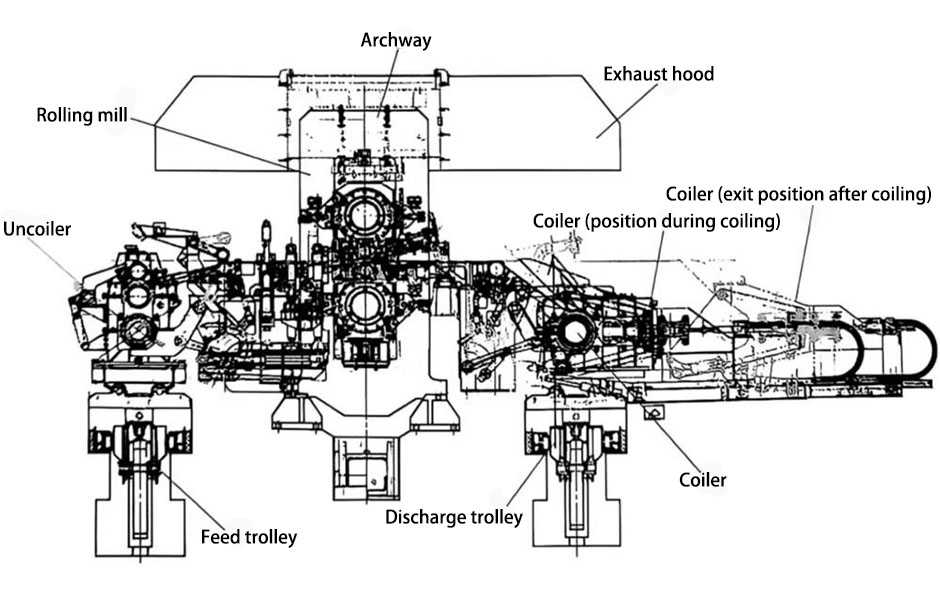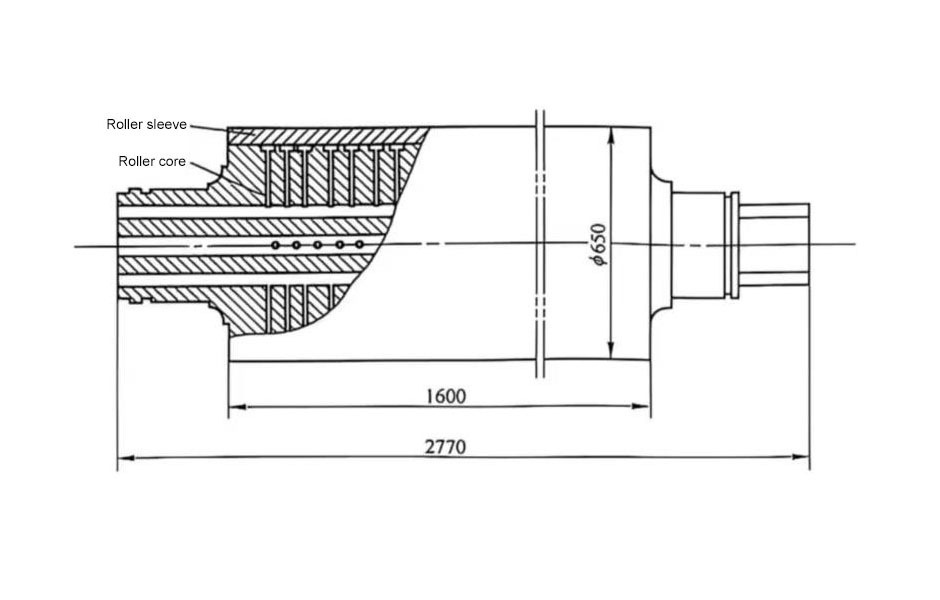Construction of electrolytic capacitor
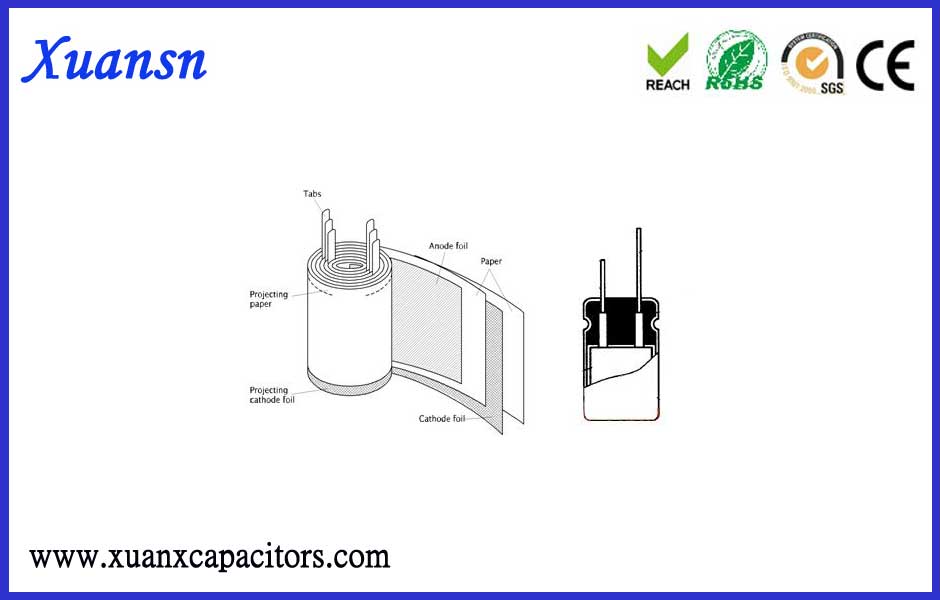
Etching
The anode and cathode metal foils are made of high-purity, very thin aluminum foil of only 0.02-0.1 mm. In order to increase the disk area and capacitance, the increase in surface area in contact with the electrolyte is achieved by etching the metal foil to dissolve the aluminum. The surface of the entire aluminum foil forms a high-density mesh structure with billions of fine micro-pipes.
Forming
There is a capacitor dielectric on the anode foil. The dielectric is a thin layer of aluminum oxide, AL2O3, which is a chemical growth process on the anode foil. This process is called “chemicalization.”
This voltage is 135%-200% of the final capacitor rated voltage.
The cathode foil is not formed, it maintains a high surface area and a high density etching mode.
The undervoltage of the oxide film and the flash discharge of the electrolyte itself cause a short circuit.
Winding
The winding of the capacitor element is a layer of separator paper, a layer of anode foil, another layer of separator paper and a cathode foil. These separator papers prevent contact between the foils to form a short circuit, and these spacers later retain the electrolyte.
In the process of winding the aluminum foil core or winding, the foil is attached to the capacitor terminal. The best way is to weld the foil to the tape by cold welding. Cold welding can reduce short-circuit failure and have better high ripple current. Performance and discharge performance.
The inner end cut-out, the foil strip riveted to the lead end, and the slit of the electrode foil profile may have burrs, resulting in a short circuit between the opposing electrodes.
Capacitor heating core package expansion and pressure shock when the safety valve is opened, the core package is deformed, resulting in short circuit between the electrodes.
Sealing
The capacitive element is sealed in a jar.
In order to release hydrogen, the seal is not hermetic, it is often pressure-tight, that is, the edge of the can is rolled into a rubber gasket, a rubber end pin or rolled into a rubber layer of a carbonated sheet.
Too tight a seal will cause an increase in pressure, too loose, the seal will shorten the life due to the allowable loss of electrolyte.
